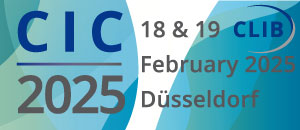The results of a new study “Sustainability of bio-based plastics: general comparative analysis and recommendations for improvement, by Clara-Rosalia Alvarez-Chaves, Sally Edwards, Rafael Moure-Eraso and Kenneth Geiser of the University of Massachusetts were recently published in the Journal of Cleaner Production 23 (2012, 47-56).
This study is the first of its kind and goes beyond life cycle thinking and environmental impact analysis. It includes political parameters that are not necessarily scientifically backed up and cannot be seen as societal or academic consensus.
All in all, the study recognises the potential offered by biobased plastics for improving the overall sustainability related to the production and consumption of plastics. The authors acknowledge the benefits of renewability, the potential for energy savings and the additional end of life options offered by a number of biobased polymers. Unfortunately, due to partly obsolete data many recommendations of the paper are outdated, as optimisation processes within the bioplastics industry are well on the way. Important improvements in sourcing strategies of bioplastics companies that took place in recent years as well as advances in production technology leading to lesser use of chemicals, lower water use and less generation of byproducts were not considered by the authors.
Furthermore, the study is based on a limited number of examples (bioplastic material types) which results in unbalanced conclusions.
Some specific remarks on the recommendations and conclusions of the study:
Guiding principles for sustainability
The study applies the catalogue of the Sustainable Biomaterials Coalition (SBC), containing 12 guiding principles for measuring sustainability, to bioplastics. This is problematic insofar as these indicators are better suited to assess the sustainability of finished products then that of a class of materials. Recommendations like “reduce single use products” or “design products that are recyclable” are not applicable to materials, they refer to final products.
Assessment of selected materials
The term “bioplastics” encompasses a wide variety of materials. The study, however, focuses on selected material types (like PLA or biobased PUR). It does not take into account recently developed materials such as biobased Polyethylene (PE) and partly biobased Polyethylene terephtalate (PET) which are highly relevant in the market (see European Bioplastics publications on worldwide bioplastics production capacity 2010-2015, available at www.europeanbioplastics.org).
GMO
The focus on selected materials and the strong emphasis on genetically modified (GMO) crops leads to a skewed perception of bioplastic materials in general. GMO is a specific issue for production facilities in a few regions, e.g. in the U.S. that use certain crops (mainly corn and soy). The switch to GMO crops is not driven by the bioplastics industry, nor is it a prerequisite to produce bioplastics. On the contrary, producers and brand owners commonly seek for possibilities to offer GMO free material or to establish offset programmes. Some producers of biopolymers that source corn from the U.S. offer various options for their customers to either compensate the use of GMO crops or to produce batches from non-GMO crops. In the US, IATP’s (Institute for Agriculture and Trade Policy) developed the Working Landscape Certification (WLC) scheme to grow more crops based on sustainable and non GMO agricultural practices.
Toxicity
Also the production of biobased plastics require energy, chemicals and catalysts and so does not differ from other plastics. The chemical and plastics industry have long-term experience in safely handling production processes and minimising the risks for workers and the environment. Additionally, sufficient regulation to secure the health of users of plastics products, e.g. food contact regulations, are in place. The detailed description of toxicological impacts of process chemicals and catalysts in the study is not correct.
Compostability
The study also links the concepts of biobased materials with the property of biodegradability. This is a frequent misconception. The biodegradability of a plastic material is not dependent on the source of raw material. 100 percent renewably sourced materials can be completely resistant to biodegradation. Analogously petro-based plastics can be biodegradable. Accordingly, blending of renewable feedstocks with petroleum-based plastics can result in biodegradable or non-biodegradable compounds.
For distinguishing both kinds of blends, compostability certification and labelling according to EN 13432, ASTM 6400 or ISO 17088 is a proven tool. Composting is a viable end-of-life option for certain product categories. However, depending on the respective type biobased polymers can be recovered via mechanical recycling and feedstock recovery or incinerated with energy recovery. Establishing use cascades with reuse, recycling and final energetic use secures the efficient utilisation of the renewable feedstock.
Technological Advances
The production of biobased plastics is in an early phase and the industry constantly makes substantial technological improvements. The study fails to integrate these developments in it’s assessment of the production of biobased plastics. For example NatureWorks, the world’s leading PLA producer, has employed a more efficient lactic acid fermentation process since that substantially reduces the formation of the lactic acid co-products already in 2008.
Agriculture and bioplastics
The obedience to the rules of good agricultural practices is an important prerequisite for fully exploiting the environmental benefit offered by biobased plastics. Currently new schemes are developedassuring the compliance of agricultural raw materials production with sustainability requirements. The International Sustainability and Carbon Certification (ISCC) organization recently launched a new scheme tailored specifically to bioplastics – “ISCC-Plus”.
ISCC-plus addresses sustainable feedstock criteria on a farm level, as well as chain of custody and traceability to the point of consumer sale. Already today certain by-products from food production are used to produce some kinds of bioplastics. This source certainly bears potential for a more intense use. Cellulosic feedstocks are already in use for some kind of materials, e.g. regenerated cellulose, cellulose acetates and lignin based polymers.
Intensive research and development is taking place in the field of biorefineries, which will tap into second generation feedstock like straw, corn stover or other cellulosic based sources. Once these are in place, a stream of non food crop based fermentable sugars will become available for energy, chemicals and polymers. This will further reduce potential conflicts in land use for food and feed purposes. The potential of bioplastics is undisputed. Acknowledging the study’s ambitious target to assess bioplastics and their full and true potential, European Bioplastics is open to the scientific discourse and is offering its expertise and network to create up-to-date insights into our industry as well as future-bound recommendations.
Source
European Bioplastics, press release, 2012-04-27.
Supplier
European Bioplastics e.V.
Institute for Agriculture and Trade Policy (IATP)
International Sustainability & Carbon Certification (ISCC)
Journal of Cleaner Production
NatureWorks LLC
University of Massachusetts
Share
Renewable Carbon News – Daily Newsletter
Subscribe to our daily email newsletter – the world's leading newsletter on renewable materials and chemicals

















